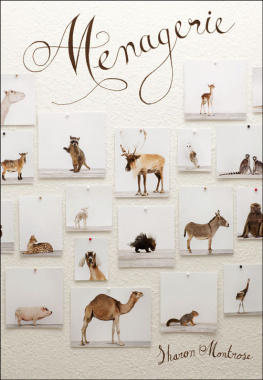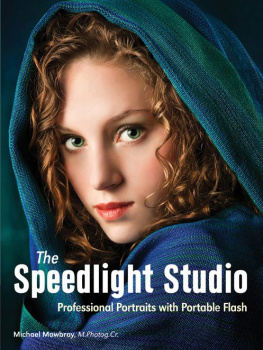CHAPTER I
ANCESTRY AND EARLY YEARS
Tradition still points to a building in the town of Montrose as the birthplace of James Graham, fifth Earl and first Marquis of the line,a building also fondly cherished by the antiquary as the last to shelter the Old Chevalier on Scottish soil. Both traditions are of course disputed, and both are easy to dispute. The title of Montrose was taken, not from the town of that name but, from the estate of Old Montrose on the opposite side of the bay, which a Graham had acquired from Robert Bruce in exchange for the lands of Cardross in Dumbartonshire. The name is said to be of Gaelic origin, Alt or Ald Moineros, the Burn of the Mossy Point; but the prefix must have been understood in its Saxon significance at least as early as the twelfth century, for in a charter of that time the place is styled Vetus Monros. The old castle has long since disappeared. The Covenanters naturally let slip no chance of despoiling the man they most feared and hated in Scotland; and of the three stately homes owned by the chief of the Grahams at the beginning of the seventeenth centuryKincardine in Perthshire, Mugdock in Stirlingshire, and Old Montrose in Forfarshireall went down in the storm of civil war. Montrose's parents seem to have resided at all three impartially, and at the last their son may have been born. If this were so, it is easy to understand how tradition, anxious for some visible memorial of a famous man in the town bearing his name, should have transferred the honour of his birth there across the few miles of water that separated it from the old home of his family. But in fact nothing is certainly known of the place or time of Montrose's birth, except that he was fourteen years old when his father died in 1626, and must consequently have been born some time in the year 1612.
The Grahams had long been conspicuous figures in Scottish history. In 1298 Sir John Graham, the chosen comrade of Wallace, had fallen, more fortunate than his friend, at the battle of Falkirk, in the churchyard of which town his tomb may still be seen. In 1304, at the capitulation which seemed for the moment to have closed the Scots' struggle for independence, Sir David, the first proprietor of Old Montrose, had been specially marked by the English king as a dangerous man. Through the wars of Bruce and his immediate successors the Grahams had stood stoutly by the national cause. In the thirteenth and fourteenth centuries they had three times intermarried with the royal blood of Scotland. A son of Sir William Graham and the Princess Mary, daughter of Robert the Third, was the first Primate of Scotland; and as a Graham of a later generation had held the see of Dunblane, the indifference expressed for bishops by their illustrious descendant should at least not have been hereditary. One of Sir William's grandsons, Patrick, was raised to the peerage as Lord Graham in 1451, and in 1505 his grandson William was made Earl of Montrose by James the Fourth, only to fall a few years later by his sovereign's side at Flodden, where he commanded a division of the Scottish van. His grandson fell with equal glory at Pinkie, a field only less disastrous to his country than the field of Flodden. But the most conspicuous of the ancestors of the Great Marquis was his grandfather John, who held in succession the offices of Treasurer, Chancellor, and Viceroy of Scotland. He seems to have possessed his full share of the turbulent spirit which marked the Scottish aristocracy then and for long after an era of milder manners had dawned upon the South. When nearly fifty years old he was engaged in a memorable brawl on the High Street of Edinburgh between a party of his own men and the followers of Sir John Sandilands, by whom one of his clan had been murdered three years previously. In this affair Lord Graham fought by his father's side, and according to one account had been the first to begin the fray. But the general tenor of his life seems to have been unusually peaceful. He bore the part expected of a young Scottish nobleman in the State ceremonies and pageants of the time, and after his succession to the title performed such duties as his position imposed on him with credit if with no particular ability. But his tastes evidently led him rather to the life of a country gentleman than of a man of affairs, and after his wife's death he seems to have devoted himself almost entirely to the care of his children and his estates. His letters show him to have been an affectionate and indulgent father, and the precision of his accounts proves him an exact but not illiberal manager. His stables were well stocked and well used, and, next to riding, archery and golf were his favourite pastimes. In these his son followed him. His skill at the targets and on the links is one of the few memorials of Montrose's youth that time has spared for us; the grace and dexterity of his horsemanship were famous even in an age and a country where all men and most women rode, and were first learned, as such accomplishments can only be learned, in boyhood, as he cantered on his white pony at his father's side over the fair heritage of his sires. But another of his father's tastes he did not share. The smell of tobacco is said to have been peculiarly disagreeable to him, and sums for tobacco and pipes are frequent in the old Earl's accounts.
Montrose was the only son of six children. Their mother was Lady Margaret Ruthven, daughter of the first Earl of Gowrie. It was whispered that, like her brother, she dabbled in magic, and had learned from a witch that her son was destined to be a firebrand to his country. If the report be trueand the Black Art found credence in Scotland long after Lady Margaret's dayshe may well have sighed to think that the wild fate which had befallen so many of her family was to be the portion of her son. For the Ruthvens had both done and suffered much evil in their time. Her grandfather, who had died in exile, a fugitive from justice, was that grim lord who had risen from a sick-bed to lead the murderers of Rizzio into their queen's presence. Her father, who had perished on the scaffold, one of the many victims of Arran's intrigues, had been concerned in the violent attempt on the young king's liberty popularly known as the Raid of Ruthven. Her two brothers had perished by the sword before their sovereign's face, a fate which there is too good reason to believe that they had destined for him. Of her own life nothing more is known than that she bore her husband six children and died in 1618 when the youngest was but three years old. Her two eldest daughters, Lilias and Margaret, were married soon after her death: Lilias to Sir John Colquhoun of Luss, a union destined to an abrupt and shameful end by his flight with her sister Katherine, who had been received into the family after her father's death and was then little more than a child; but Margaret, though she did not live long to enjoy it, was more fortunate in her marriage with Archibald, first Lord Napier of Merchiston, a wise and good man who had been particularly recommended by King James to his son as the most judicious and disinterested of all Scottish statesmen. Of the others, Dorothea became the wife of Sir James, afterwards Lord Rollo, and Beatrix, the youngest and apparently her brother's favourite, the wife of the Master of Maderty, one of the first to join Montrose under the standard of their king. Both Margaret and Dorothea died young, the first probably about 1630, the latter in 1638; the deaths of Lilias and Beatrix are unrecorded; of Katherine all traces seem to have been lost after her disappearance from her sister's house in 1631.










